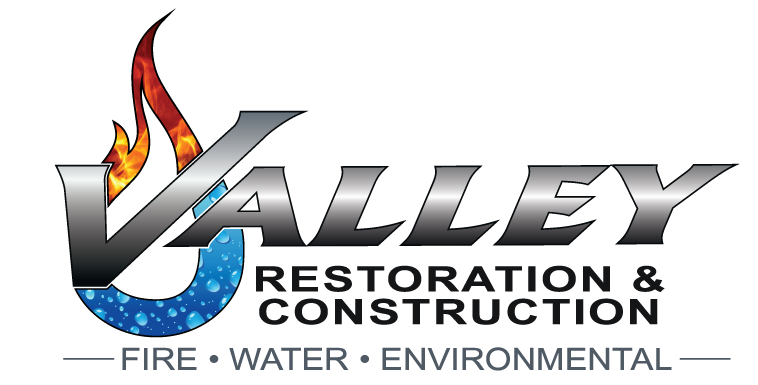Asbestos isn’t just a relic of the past—it’s a very real and ongoing danger in many older homes and commercial buildings. Commonly used in construction materials through the late 20th century, asbestos is a silent threat that can go undetected for decades. It doesn’t have a smell. You can’t see it in the air. And the symptoms of exposure may not show up for 20–30 years.
At Valley Restoration & Construction, we specialize in safe, certified asbestos removal across Montrose, Delta, Olathe, Ouray, Telluride, and surrounding areas. We’ve seen firsthand how dangerous this material can be. If your home was built before 1980, it’s crucial to understand how asbestos can affect your health—and what you can do about it.
Why Asbestos Is So Dangerous
What makes asbestos especially harmful is its microscopic, fibrous structure. When disturbed through renovation, demolition, or even aging, those fibers can become airborne and linger in the air for hours. Once inhaled, they embed themselves deep in the lungs and other tissues, where they can cause long-term, irreversible damage.
Unlike a typical household hazard, asbestos doesn’t cause immediate symptoms. That delayed effect is what makes it so insidious. People often don’t realize they were exposed until decades later, when the resulting illness is far more difficult to treat.
Major Health Effects of Asbestos Exposure
Asbestosis
Asbestosis is a chronic lung condition caused by the accumulation of asbestos fibers in the lungs. Over time, the body reacts by forming scar tissue, reducing lung elasticity, and making breathing increasingly difficult. People with asbestosis often suffer from chronic coughing, chest pain, and shortness of breath that worsens with time.
There is no cure for asbestosis, and it can be severely debilitating. In advanced cases, patients may require oxygen support and are at higher risk of developing more serious complications like respiratory failure or lung cancer.
Mesothelioma
Mesothelioma is a rare but deadly cancer that almost exclusively results from asbestos exposure. It develops in the mesothelium—the thin protective lining around the lungs, abdomen, or heart. Because the disease often lies dormant for decades, it’s frequently diagnosed at an advanced stage, which limits treatment options and greatly affects life expectancy.
Early symptoms of mesothelioma include chest pain, fatigue, and fluid buildup around the lungs. Unfortunately, the average life expectancy after diagnosis is typically under a year, even with aggressive treatment.
Lung Cancer
Lung cancer caused by asbestos exposure is one of the most dangerous outcomes. The risk increases dramatically for individuals who smoke or have other respiratory conditions. Studies show that smoking and asbestos exposure together create a compound effect, making lung cancer far more likely.
Symptoms of asbestos-related lung cancer include persistent coughing, coughing up blood, hoarseness, and chest pain. As with other asbestos-related illnesses, it’s often diagnosed in later stages, making early detection and regular health screening critical for those with a history of exposure.
Pleural Disorders
Asbestos exposure doesn’t always lead to cancer, but it can still severely damage the pleura—the thin membrane that lines the lungs and chest wall. This can result in a range of conditions known as pleural disorders.
- Pleural Effusion: Fluid buildup between the layers of the pleura, causing chest pain and breathing difficulty.
- Pleural Plaques: Areas of fibrous thickening on the pleura, which may not cause symptoms but indicate past exposure.
- Diffuse Pleural Thickening: Widespread scarring that can restrict lung function.
These conditions may be warning signs of more serious asbestos-related disease, and they should never be ignored.
Other Cancers Linked to Asbestos
Emerging research also links asbestos exposure to other forms of cancer, including:
- Laryngeal Cancer
- Ovarian Cancer
- Stomach and Colon Cancers
While these connections are still being studied, asbestos in the body increases the risk of abnormal cell growth in multiple systems, not just the lungs.
Who’s Most at Risk?
While anyone can be exposed to asbestos, certain groups face much higher risks:
- Construction and Renovation Workers: Those working on older buildings are routinely exposed without proper protective equipment.
- Homeowners Doing DIY Renovations: Tearing out tile, scraping ceilings, or removing insulation in homes built before 1980 is especially risky.
- Cleanup Crews After Fire or Flood Damage: Disasters can break apart materials and release asbestos fibers into the air.
- People Living Near Old Industrial Sites or Mines: Asbestos particles can contaminate the surrounding environment and enter homes through HVAC systems or open windows.
If you belong to one of these groups or if you recently disturbed old building materials, it’s wise to seek testing and medical guidance.
What to Do If You Suspect Exposure
If you believe you’ve been exposed to asbestos, here’s what to do next:
- Monitor Your Health: Look for persistent cough, chest pain, or shortness of breath.
- Talk to a Healthcare Provider: Let them know about any known or suspected exposure history.
- Don’t Disturb Materials: If you suspect asbestos in your home, do not attempt to remove or inspect it yourself.
- Contact Certified Professionals: Valley Restoration can inspect, test, and safely remove asbestos according to Colorado state regulations.
Call Valley Restoration for Safe Asbestos Abatement
Asbestos exposure is not something to take lightly. When it comes to protecting your family or employees, professional removal is the only safe option. Valley Restoration & Construction is a certified asbestos abatement contractor serving Montrose and the entire Western Slope of Colorado. Our experienced team is available 24/7 and equipped to handle asbestos testing, containment, and removal the right way.
If you suspect asbestos in your home or workplace, don’t wait. Contact Valley Restoration today for an inspection and peace of mind.
Contact us today to schedule your asbestos assessment.
